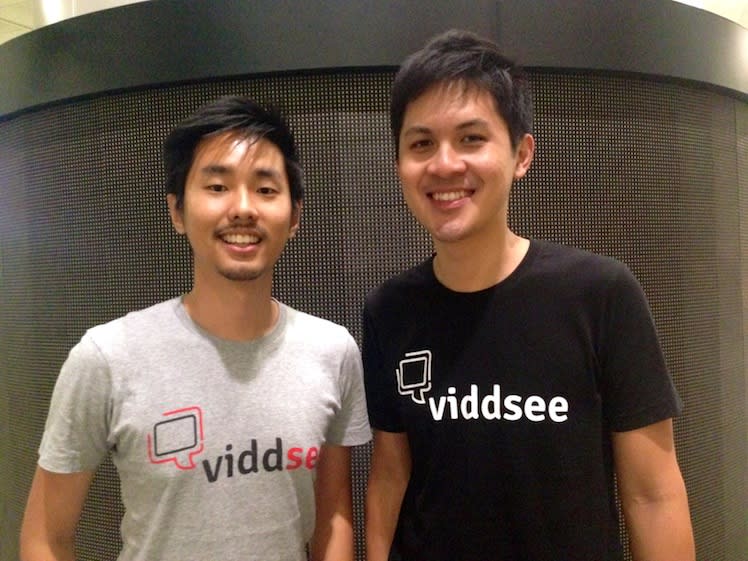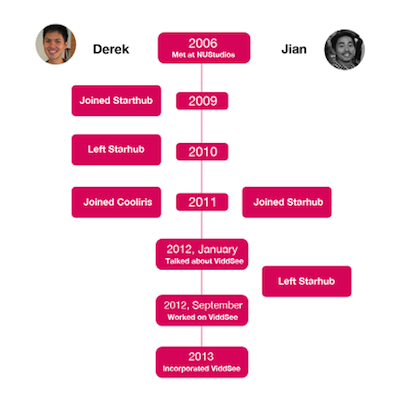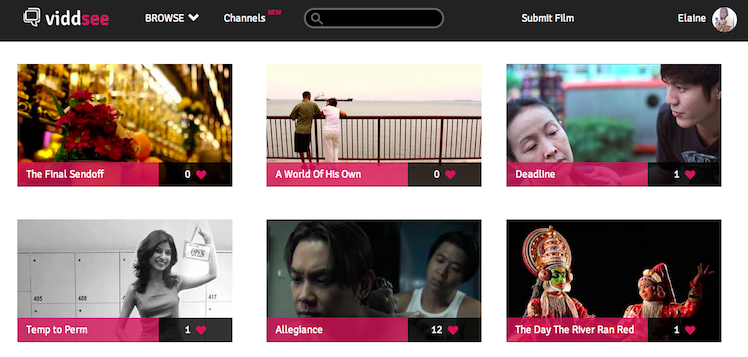Asian film portal Viddsee: “It’s either we do it now or miss the boat”
In 2006, Derek Tan met Ho Jia Jian in a club for film lovers. Seven years later, they are now proud co-founders of Viddsee. What happened along the way?
Seven years ago, when Ho Jia Jian and Derek Tan first met in a club for film enthusiasts, the thought of starting a tech business together was far from their minds.
Today, they are proud co-founders of an Asian short films portal, Viddsee. First incorporated in January 2013, it has partnered with Singapore Short Films Awards, DigiCon6 and Filmmakers@DFT to showcase and highlight talents in the region.
Like parents of a newborn, Ho and Tan could always be found in classic black, pink or grey Viddsee T-shirts, talking about their startup with beaming faces.
But while much has been written about Viddsee, not as much is known about Ho and Tan. After a long but fulfilling 54-minute interview, this is what e27 managed to find out about the two film aficionados.
A fervour for filmmaking
The two first crossed paths in NUStudios, an extra-curricular club back in 2006, when studying in the National University of Singapore (NUS). Ho, then only 19, had joined the club as a new member, while Tan, then 22, was Vice-President.

Viddsee co-founders, Ho Jia Jian and Derek Tan
Ho recounts, “Our working relationship started since we were students back then.” The both of them were also from the Engineering faculty at NUS, even though they focused on different disciplines. Tan studied Electrical and Computer Engineering while Ho was a Mechanical Engineering student.
The duo also shared a fervour for filmmaking – one which translates into their passion for Viddsee. This love and enthusiasm had started even before they stepped foot into the University. Ho had worked on production sets for Fear Factor Asia, and Tan started fiddling with the video camera in Secondary School.

Timeline of Viddsee’s co-founders
After graduating from University, Tan headed over to StarHub, a telecom conglomerate in Singapore, to develop online television platforms.
He says, “It was a very natural extension because that love for films gelled with my technology background. … It reached a point where we wanted to help the industry as a whole.”
Viddsee was their way of helping the industry. It was an initiative to give filmmakers an opportunity to showcase their works online, better understand consumers and educate a new cohort of potential film connoisseurs.
“Way before (early last year), we have always been toying around with the idea of a company,” informs Tan.
In 2010, Tan left StarHub, and later left for Silicon Valley. He then joined Cooliris, a media sharing platform, in 2011. In that same time frame, Ho had joined StarHub in 2011, and only left in August 2012.
Heading over to Silicon Valley, Mecca of technology startups and innovation, also helped motivate the two co-founders. The trip acted as a catalyst for them to finally start the company and get things moving.
Ho says, “I remember having calls when Derek was still in the US; he was in the Valley itself and we have all these ideas. I came back from the Valley at one point and I was so excited.”
Tan adds that before he travelled to Silicon Valley to understand more about the startup scene over there, he was “just a filmmaker.” He then likens being a filmmaker to an entrepreneur, and says, ”
“As a filmmaker, you do very much what entrepreneurs do – you try to raise money, you try to get your product made, which is your film. You get your film out. … Joining StarHub, getting more involved in technology, going to the Valley as well really opened my mind.”
In January 2012, Tan and Ho started talking more seriously about Viddsee, and eight months later, they finally started working on the idea. Ho shares, ”I think day by day, what really rang in our heads was, “It’s either we do it now or we’re just going to miss the boat.”
They had always wanted a web app. Tan says, “We debated about whether we should go with a native or web app. We wanted scale. We wanted the ease of accessibility. We didn’t want to restrict it to any one particular platform.”
In three months, with the help of an external web developer, Viddsee went live as a web platform.
Lean startup grows fast
Whenever someone thinks of starting a company, seldom do they associate it with the seemingly menial and trivial tasks like setting up a Facebook Page or collecting user feedback. Everything sounds lofty.
Tan tells e27 that he was inspired by the lean startup method of developing a business. First coined by Eric Ries, the movement focuses on repeatedly iterating services or products and reducing market risks.
He says, “At that point of time (September 2013), we built a Facebook Page, aggregated films that were already online, did some testing and conceptualising the product itself. A lot of things were inspired by that movement.”
“We went out, talked to people, understood their problems and pains before actually building it. … We showed traction (on our Facebook page).”
Even before their product was launched, in December 2012, Viddsee was selected to exhibit at the Asia Television Forum. Ho explains that the duo would showcase just static mockups of what their web platform and app would look to industry experts. This boosted their efforts in reaching out to their target market.
Read also: Video sharing apps: Goldmine or sinkhole?
Tan also shares about their strategy in sussing out early adopters. He says, “I think number one, we are filmmakers. We are not tech guys (who might think) ‘Let’s build an online platform so we can help filmmakers. Oh shoot, we don’t know any filmmakers.’ … We are that target segment.”
At one point, even parents of their friends were watching short films on Viddsee. Tan adds,
“You set the goal of targeting a certain segment, but it will spread, because they become your advocates. We’ve always been targeting Southeast Asia but the films on our platform have reached the US.”
“As long as you bring value, revenue will follow,” says Ho, when asked about whether Viddsee should be generating income from partnership deals. He then adds that the company will focus on acquiring users in the first year.
Gathering feedback
Even though the team did receive a lot of useful feedback, not all of it was actually relevant.
Tan explains that it all boils down to their focus. He says, “We take that (feedback) and learn, but it goes back to our own focus. What do we want to tackle at this point of time? Without that focus, we would have gone all over the place and do everything. At the end of the day, it won’t be the product that we want.”
Now that the two are almost a year into their business, some insights gathered by industry experts in the past are now usable, even though it might not have been relevant a while back. Ho explains, “You have a thousand and one comments, but only one person working. … You have a small team.”
“But it doesn’t mean that thousand and one items isn’t worth listening to, but some of them come in three months, six months, two years later.”
Challenges for Viddsee
With over 200 films directed by more than 200 filmmakers on Viddsee, Ho and Tan tells e27 about the top three challenges they are currently facing as a company.
Firstly, Ho sheds some light on educating Viddsee’s audience in terms of content curation. He says, “In terms of first learning and understanding who your audience is, and knowing their appetite, and continually grooming them and get them excited about what’s coming.”

Screen capture of Viddsee
Ho adds that Viddsee stands between user generated content, like YouTube, and Hollywood-produced content found in cinemas.
Within the filmmaking community, Tan also shares that there’s now a slogan being passed around. Four simple words – “Put it on Viddsee.” He explains that when filmmakers now talk about their new projects, friends would recommend them to put those clips on the regional platform.
Secondly, Tan says that there is always a constant need to shift from being a high-level tech company to swimming against the tide as a small startup.
Read also: Viddsee launches mobile web app, looks to grow community
Ho chimes in, “It’s that dream. You’re building castles in the air. But you need to come back down.”
Tan adds, “You go right to execution. You work with the partners, doing community management and jump back up again. … You meet investors and come up with decks. Going up and down is tiring, but it’s needed.”
Lastly, the startup is also looking for investors who are able to help them grow, and have connections in the media and entertainment space.
It’s not just about financing, it seems. Ho says, “It’s not just about “I have this dollar and cents and how can I multiply that?” … We are still experimenting around. … We need someone who can believe in the vision.”
The post Asian film portal Viddsee: “It’s either we do it now or miss the boat” appeared first on E27.



